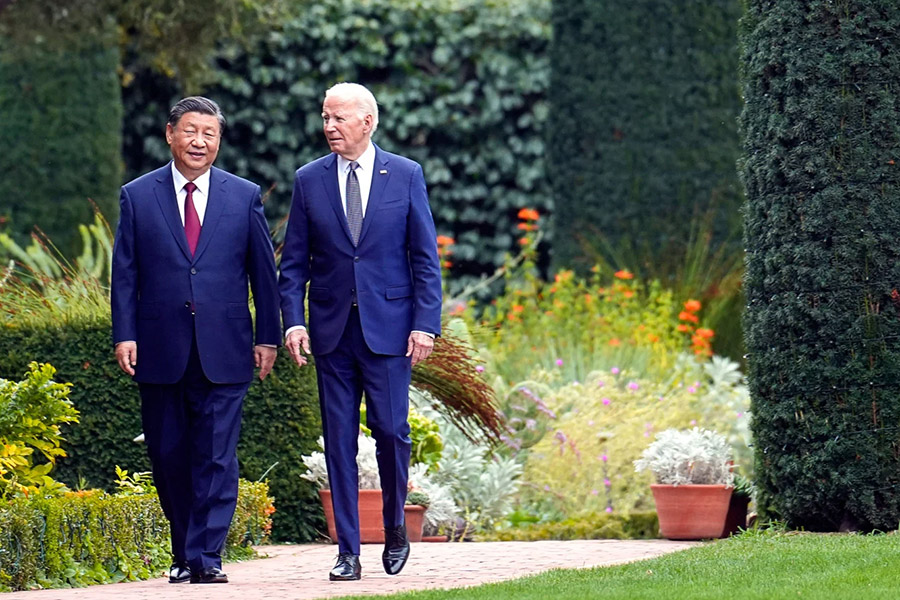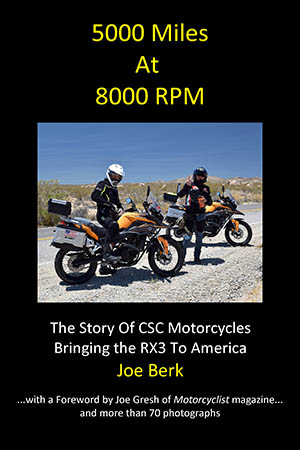By Joe Berk
You probably know about the meeting between Joe Biden and Xi Jinping last week. What you might not know about is Woodside, California, and the Filoli estate where they met. As always, we want our ExNotes readers to be knowledgeable and up to date, and that’s the focus of this article. I’ve actually been to and photographed the Filoli estate and mansion, and I’ve written a bit about Woodside before.
The Filoli mansion was built in 1917 for William Bourn II, who by any measure was a wealthy guy. He owned one of California’s richest gold mines and was president of the Spring Valley Water Company that served San Francisco and its surrounding areas. If you are wondering about the name, it’s formed by the first two letters of each word from of Bourn’s motto: Fight for a just cause; Love your fellow man; Live a good life.
The Filoli mansion and its gardens occupy 16 acres; the entire estate covers 654 acres and extends to the Crystal Springs Reservoir (which still provides water to San Francisco). If you drive south on the 280 freeway from San Francisco (it follows the San Cruz Mountain range), you can see the reservoir on the right.

Big mansions are expensive to maintain and hard to keep up. That’s why a lot of the big ones have been donated by the families that owned them to the state or other organizations and opened to the public for tours. It’s what the Hearst family did with Hearst Castle further south, and it is what happened to the Filoli mansion. The Filoli mansion and surrounding grounds are now owned by the National Trust for Historic Preservation. For a modest fee you can visit and walk through the same rooms and gardens as Xi and Biden. It’s cool. I did it in 2019 and here are a few Filoli photos from that visit.




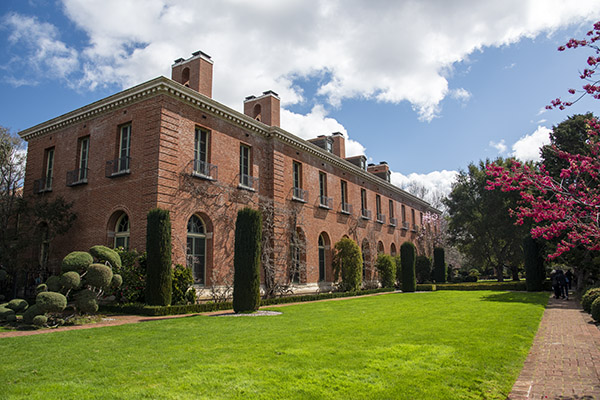

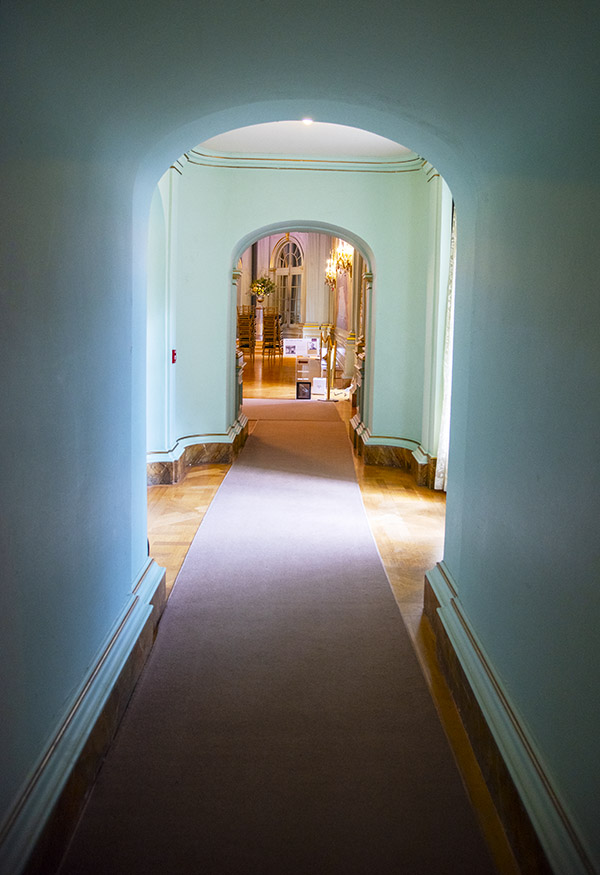
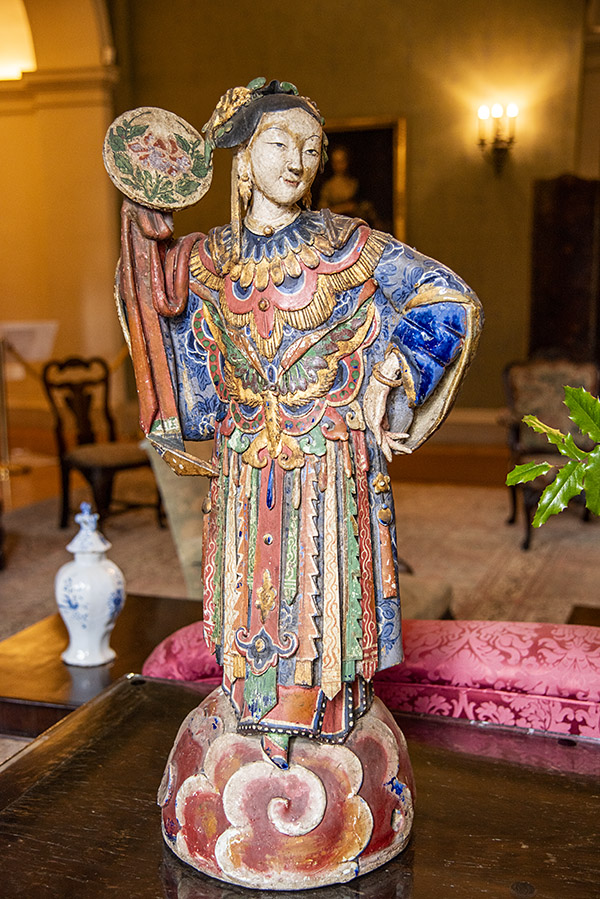
A bit more about the town of Woodside: Woodside is one of the wealthiest places in America. A partial list of the big names who live or have lived in Woodside include Charles Schwab (yes, that Charles Schwab), Steve Jobs, Michelle Pfeiffer (the classiest actress ever), Joan Baez, Nolan Bushnell (the founder of Atari and the Chuck E. Cheese restaurant chain), Scott Cook (the founder of Intuit), Carl Djerassi (a novelist and the guy who developed the birth control pill), Larry Ellison (the CEO of Oracle Corporation), James Folger (as in need a cup of coffee?), Kazuo Hirai (the CEO of Sony), Mike Markkula (the second Apple CEO), Gordon E. Moore (Intel’s co-founder and originator of Moore’s Law), Prince Vasili Alexandrovich (the nephew of Tsar Nicholas II of Russia), Shirley Temple, John Thompson (Symantec’s CEO), and Nick Woodman (founder and CEO of GoPro). Woodside is within commuting distance of Silicon Valley, so it’s understandable, I guess, why so many high-rolling Silicon Valley types call it home.

This is an interesting and beautiful area. The Pacific Ocean is just on the other side of the San Cruz range, and a circumnavigation of these mountains makes for a hell of a motorcycle ride (see our earlier blog and the article I wrote for Motorcycle Classics magazine).
I don’t know if Xi and Biden accomplished much during their meeting. If I had organized their visit, I would have left all the entourage folks behind and given Uncles Joe and Xi a map and a couple of RX3 motorcycles. They would have had a better time and probably emerged with a better agreement. A good motorcycle ride will do that for you.
You know, we don’t do politics on ExNotes, but I have to get in a comment here. There ought to be a win-win solution to our current disagreements with China. I think if I could be king of the U.S. for about six months (not President, but King) and good buddy Sergeant Zuo from our ride across China could be King of China for the same time period, we could go for another ride and figure it all out. I’d bring Gresh along to keep it interesting and I’d get another book out of it, too. That’s my idea, anyway.
If you’d like to read more about Joe Gresh’s and my ride across China with Sergeant Zuo, you should pick up a copy of Riding China.
 And if you’d like to read about Gresh and me riding across America with the Chinese, you need a copy of 5000 Miles at 8000 RPM.
And if you’d like to read about Gresh and me riding across America with the Chinese, you need a copy of 5000 Miles at 8000 RPM.
Never miss an ExNotes blog:

